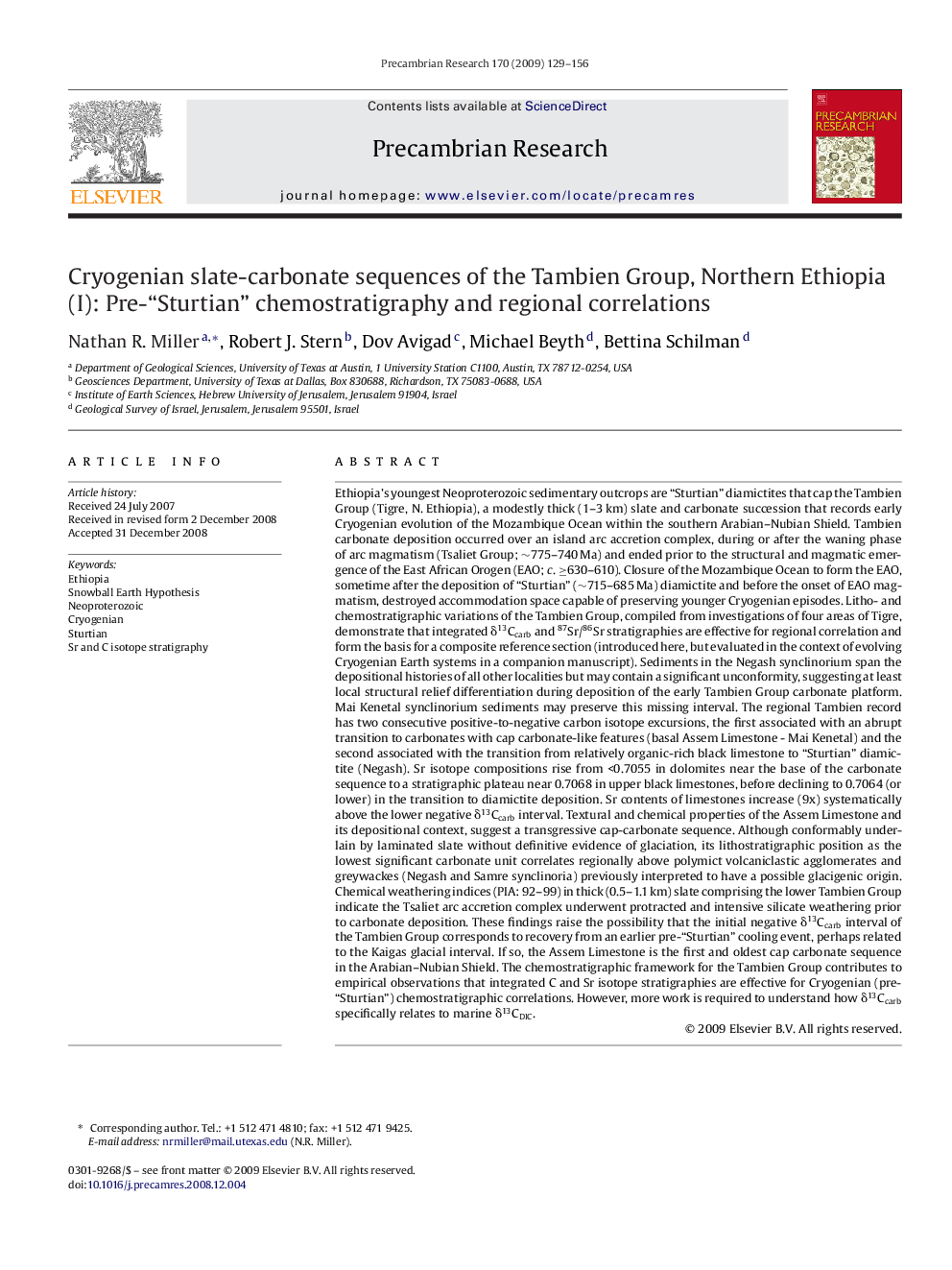| کد مقاله | کد نشریه | سال انتشار | مقاله انگلیسی | نسخه تمام متن |
|---|---|---|---|---|
| 4724005 | 1639691 | 2009 | 28 صفحه PDF | دانلود رایگان |

Ethiopia's youngest Neoproterozoic sedimentary outcrops are “Sturtian” diamictites that cap the Tambien Group (Tigre, N. Ethiopia), a modestly thick (1–3 km) slate and carbonate succession that records early Cryogenian evolution of the Mozambique Ocean within the southern Arabian–Nubian Shield. Tambien carbonate deposition occurred over an island arc accretion complex, during or after the waning phase of arc magmatism (Tsaliet Group; ∼775–740 Ma) and ended prior to the structural and magmatic emergence of the East African Orogen (EAO; c. ≥630–610). Closure of the Mozambique Ocean to form the EAO, sometime after the deposition of “Sturtian” (∼715–685 Ma) diamictite and before the onset of EAO magmatism, destroyed accommodation space capable of preserving younger Cryogenian episodes. Litho- and chemostratigraphic variations of the Tambien Group, compiled from investigations of four areas of Tigre, demonstrate that integrated δ13Ccarb and 87Sr/86Sr stratigraphies are effective for regional correlation and form the basis for a composite reference section (introduced here, but evaluated in the context of evolving Cryogenian Earth systems in a companion manuscript). Sediments in the Negash synclinorium span the depositional histories of all other localities but may contain a significant unconformity, suggesting at least local structural relief differentiation during deposition of the early Tambien Group carbonate platform. Mai Kenetal synclinorium sediments may preserve this missing interval. The regional Tambien record has two consecutive positive-to-negative carbon isotope excursions, the first associated with an abrupt transition to carbonates with cap carbonate-like features (basal Assem Limestone - Mai Kenetal) and the second associated with the transition from relatively organic-rich black limestone to “Sturtian” diamictite (Negash). Sr isotope compositions rise from <0.7055 in dolomites near the base of the carbonate sequence to a stratigraphic plateau near 0.7068 in upper black limestones, before declining to 0.7064 (or lower) in the transition to diamictite deposition. Sr contents of limestones increase (9x) systematically above the lower negative δ13Ccarb interval. Textural and chemical properties of the Assem Limestone and its depositional context, suggest a transgressive cap-carbonate sequence. Although conformably underlain by laminated slate without definitive evidence of glaciation, its lithostratigraphic position as the lowest significant carbonate unit correlates regionally above polymict volcaniclastic agglomerates and greywackes (Negash and Samre synclinoria) previously interpreted to have a possible glacigenic origin. Chemical weathering indices (PIA: 92–99) in thick (0.5–1.1 km) slate comprising the lower Tambien Group indicate the Tsaliet arc accretion complex underwent protracted and intensive silicate weathering prior to carbonate deposition. These findings raise the possibility that the initial negative δ13Ccarb interval of the Tambien Group corresponds to recovery from an earlier pre-“Sturtian” cooling event, perhaps related to the Kaigas glacial interval. If so, the Assem Limestone is the first and oldest cap carbonate sequence in the Arabian–Nubian Shield. The chemostratigraphic framework for the Tambien Group contributes to empirical observations that integrated C and Sr isotope stratigraphies are effective for Cryogenian (pre-“Sturtian”) chemostratigraphic correlations. However, more work is required to understand how δ13Ccarb specifically relates to marine δ13CDIC.
Journal: Precambrian Research - Volume 170, Issues 3–4, May 2009, Pages 129–156